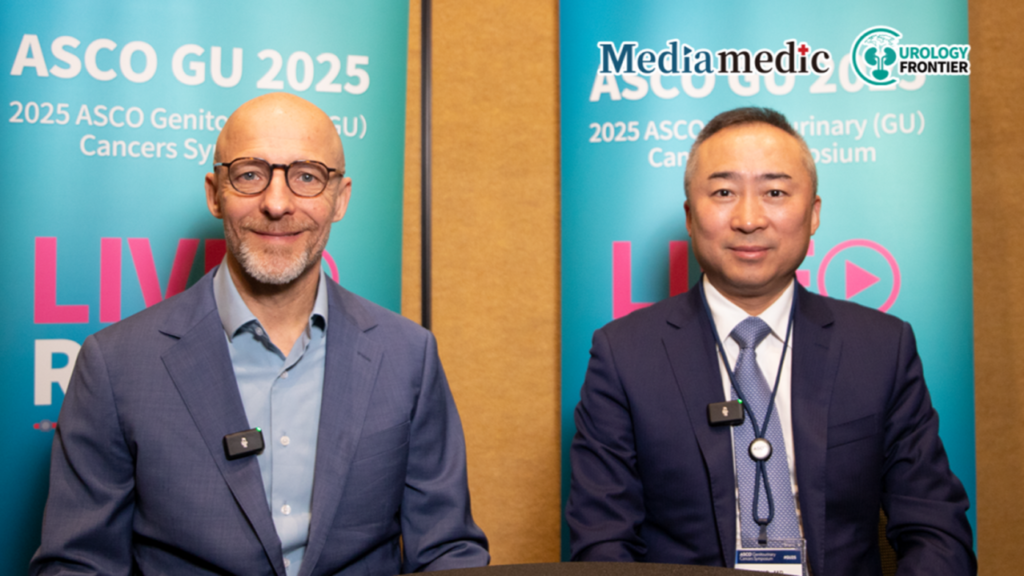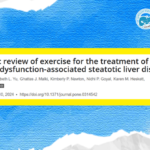
Clear cell renal cell carcinoma (ccRCC) is widely associated with dysregulation of the VHL (Von Hippel-Lindau) pathway, leading to overexpression of HIF-2α, which activates multiple oncogenic pathways. Targeting HIF-2α, with therapies such as belzutifan, has brought new hope to VHL patients and renal cancer patients alike. At this year’s ASCO GU symposium, Urology Frontier invited Dr. Kan Gong from Peking University First Hospital to engage in a discussion with Dr. Eric Jonasch, Director of the VHL Clinical Center at MD Anderson Cancer Center. Together, they explored VHL disease characteristics, the mechanism of action of belzutifan, key research findings, and its clinical value.Urology Frontier: Professor Gong, can you share your connection with Dr. Eric Jonasch and re lated research collaborations?
Dr. Kan Gong: It is a great honor to engage in this discussion with Dr. Eric Jonasch, a renowned oncologist from MD Anderson Cancer Center, Dr. Jonasch has made significant contributions to the field of renal cancer and genitourinary tumors. In 2021, his study on 61 VHL patients treated with the HIF-2α inhibitor belzutifan, published in The New England Journal of Medicine, provided an entirely new research perspective.
In recent years, my research has primarily focused on renal cancer (particularly VHL-related renal cancer) and prostate cancer. I have led three clinical studies investigating HIF-2α inhibitors in VHL-associated diseases and renal cancer. The related research findings were selected for presentation at ASCO GU, and on February 15, we unveiled China-specific data on belzutifan for the first time. At the conference, I had the opportunity to engage in in-depth discussions with Professor Jonasch on several key research advances in renal cancer.
Urology Frontier: Renal cell carcinoma is one of the most common malignancies in VHL patients. Could you describe the clinical characteristics of this disease and the unmet clinical needs?
Dr. Kan Gong: Dr. Eric Jonasch is a global expert in this field. As widely known, Von Hippel-Lindau (VHL) syndrome is a rare autosomal dominant hereditary disorder characterized by multi-organ tumor syndromes, including tumors in the brain, eyes, inner ear, adrenal glands, kidneys, ovaries, and epididymis. The leading causes of mortality in VHL patients are hemangioblastomas of the central nervous system and renal cell carcinoma (RCC). The incidence of VHL is estimated at 1 in 91,000 to 1 in 36,000 individuals, and it has been included in China’s second batch of rare disease catalogs.
While VHL is classified as a rare disease, China’s large population means that rare diseases are not necessarily uncommon. Given its autosomal dominant inheritance pattern, affected parents have a 50% chance of passing the mutation to their offspring, often resulting in multiple affected individuals within the same family. This can be devastating for families dealing with the disease.
Renal cell carcinoma (RCC) is the most common malignancy in VHL patients and a leading cause of mortality. Approximately 70% of VHL patients will develop RCC in their lifetime, often facing tumor progression and the need for multiple surgeries. Given these challenges, exploring novel treatment strategies is critical to improving both survival and quality of life, particularly for patients with bilateral tumors or recurrent disease.
Currently, clinical guidelines recommend surgery when the renal tumor diameter reaches 3 cm or larger. However, our cohort study found that the risk of metastasis increases significantly when tumors reach 4–7 cm. Based on these findings, we propose updating the guidelines to recommend surgical intervention at 4 cm instead of 3 cm.
At present, China lacks a standardized treatment strategy specifically for VHL-associated RCC. Available options include sorafenib, sunitinib, axitinib, and everolimus, which are traditionally used for sporadic RCC. However, there are no guideline-recommended precision therapies tailored for VHL-associated RCC. This underscores the urgent need to explore surgical strategies, targeted therapies, and new treatment approaches to address significant unmet clinical needs in this patient population.
Urology Frontier: The LITESPARK clinical trial series you led played a pivotal role in the FDA’s approval of the first HIF-2α inhibitor, belzutifan, for treating VHL-associated renal cancer. Could you elaborate on the mechanism of action of this HIF-2α inhibitor and the supporting clinical evidence?
Dr. Eric Jonasch: The LITESPARK trial series focused on belzutifan, a small-molecule HIF-2α inhibitor. HIF-2α (Hypoxia-Inducible Factor-2α) is a transcription factor that regulates the expression of genes involved in angiogenesis, cell proliferation, and survival. In patients with VHL disease, loss of VHL gene function leads to abnormal accumulation of HIF-2α, which is a key driver of renal cell carcinoma (RCC) pathogenesis.
Belzutifan works by blocking HIF-2α from forming a heterodimer with HIF-1β, thereby downregulating the transcription of target genes and mitigating the adverse effects caused by VHL inactivation. Since VHL loss drives the oncogenic process in clear cell RCC, inhibiting HIF-2α directly addresses a critical molecular pathway underlying tumor development.
Building on this mechanism, our study evaluated 61 patients with the VHL disease spectrum, with objective response rate (ORR) in RCC as the primary endpoint. The trial also assessed response rates in pancreatic neuroendocrine tumors (pNETs) and central nervous system (CNS) hemangioblastomas. The results demonstrated significant therapeutic benefits across these tumors.
Initially, the ORR for RCC was approximately 40%, but it has now increased to around 60%. For CNS hemangioblastomas, the ORR reached 70%, while pNETs showed an impressive ORR of 91%. These data underscore the broad therapeutic impact of belzutifan across the VHL disease spectrum.
Beyond tumor regression, we also observed stabilization of retinal lesions and neuroendocrine tumors, further supporting belzutifan’s clinical efficacy. Given its mechanism-driven approach, this therapy has met expectations and provided substantial benefits to patients with VHL-related tumors.
Urology Frontier: At the ASCO-GU Conference, You Presented the LITESPARK-015 Study on Belzutifan in Chinese VHL Patients. Could You Share the Key Findings and Discuss the Significance of This Treatment’s Approval for VHL Patients?
Dr. Kan Gong: It was an honor for us to present the findings of the LITESPARK-015 study on the morning of February 15 at the ASCO-GU Annual Meeting. This marks the first time that data specific to Chinese patients in this field have been released. The research conducted by my esteemed colleague, Dr. Eric Jonasch, on 61 VHL patients treated with belzutifan, published in The New England Journal of Medicine, yielded highly encouraging results. The remarkable efficacy of this treatment in renal cancer has been a great source of inspiration for our team.
Against this backdrop, we conducted the LITESPARK-015 study focusing on Chinese patients. The inclusion criteria required participants to be 18 years or older, diagnosed with localized VHL-associated tumors, and to have at least one measurable pheochromocytoma/paraganglioma (PPGL), pancreatic neuroendocrine tumor (pNET), or renal cell carcinoma (RCC) that did not require immediate surgery. Patients were administered 120 mg of belzutifan orally once daily until disease progression or the onset of intolerable toxicity. The primary endpoint for Cohort B1 was the objective response rate (ORR) in Chinese VHL-associated RCC patients. Secondary endpoints included disease control rate (DCR), time to response (TTR), duration of response (DOR), progression-free survival (PFS), overall survival (OS), and safety.
A total of 23 Chinese patients were enrolled and treated in Cohort B1, with baseline characteristics recorded. As of the data cutoff date (May 23, 2024), the median follow-up duration was 14.9 months. The ORR for RCC patients was 83% (95% CI, 59%–96%), with 15 patients achieving partial response (PR). All four PPGL patients exhibited stable disease.
There were no recorded PFS or OS events. All 23 patients (100%) reported adverse events (AEs) of any cause. The most common AEs (≥20% incidence) included anemia, elevated ALT, elevated AST, fatigue, upper respiratory tract infection (URI), and increased GGT. Grade 3 AEs occurred in 9 patients (39%), with no Grade 4 or 5 events. Three patients (13%) experienced serious adverse events (SAEs), and one patient discontinued treatment due to treatment-related renal tumor bleeding.
Overall, the data collected from Chinese patients have been highly encouraging. Aside from pheochromocytoma, all other renal cancer subtypes demonstrated favorable treatment outcomes. This breakthrough not only offers new hope for VHL-associated renal cancer patients but also expands the range of targeted therapies available for advanced renal cancer, equipping future research and clinical practice with additional therapeutic options.
Dr. Kan Gong
- Professor, PhD Supervisor, Chief Physician
- Deputy Director, Institute of Urology, Peking University
- Deputy Director, Tumor Translational Center, Peking University First Hospital
- Director, Scientific Research, Peking University First Hospital
- National High-Level Talent Special Support Program (Ten-Thousand Talents Program)
- Leading Talent in Science and Technology Innovation, Ministry of Science and Technology
- Outstanding Talent of the New Century, Ministry of Education
- Member, Tumor Group, Chinese Urological Association (CUA)
- Deputy Leader, Translational Medicine Group, Chinese Urological Association (CUA)
- Member, First Committee on Rare Diseases, Chinese Medical Association
- Vice Chairman, Urology Branch, China Medical Promotion Association
- Head, Genetics and Rare Diseases Collaborative Group, Chinese Urological Association
- Member, Urological Oncology Committee, Chinese Medical Doctor Association
- Standing Member, Hereditary Tumor Committee, Chinese Anti-Cancer Association
- Executive Council Member, Rare Disease Branch, Chinese Research Hospital Association
- Standing Member, Oncology Committee, Beijing Medical Association
- Standing Member, Rare Disease Committee, Beijing Medical Association
- Advisory Member, International VHL Alliance
Professor Gong has been dedicated to the diagnosis, prevention, and treatment of rare and complex urological tumors. He has led over 20 major national projects, including key initiatives from the Ministry of Science and Technology and the National Natural Science Foundation. His research has been published in top-tier journals such as Cancer Discovery, PNAS, and Cancer Research, with over 100 SCI-indexed papers. He holds three granted patents, one of which has successfully been commercialized.
Dr. Eric Jonasch
- Director, VHL Clinical Center, MD Anderson Cancer Center
Dr. Eric Jonasch is a Professor in the Department of Genitourinary Medical Oncology at the University of Texas MD Anderson Cancer Center. He also serves as the Director of the Von Hippel–Lindau (VHL) Clinical Center and Co-Director of the Kidney Cancer Research Program at MD Anderson Cancer Center.
Dr. Jonasch’s clinical expertise lies in renal cell carcinoma and the translational study of VHL disease. He has led multiple investigator-initiated clinical trials and ongoing laboratory research focused on evaluating responses to targeted therapies and mechanisms of resistance. He is a member of organizations such as the American Association for Cancer Research (AACR) and the American Society of Clinical Oncology (ASCO).
Currently, Dr. Jonasch serves as Vice Chair of the NCCN Kidney Cancer Panel.


